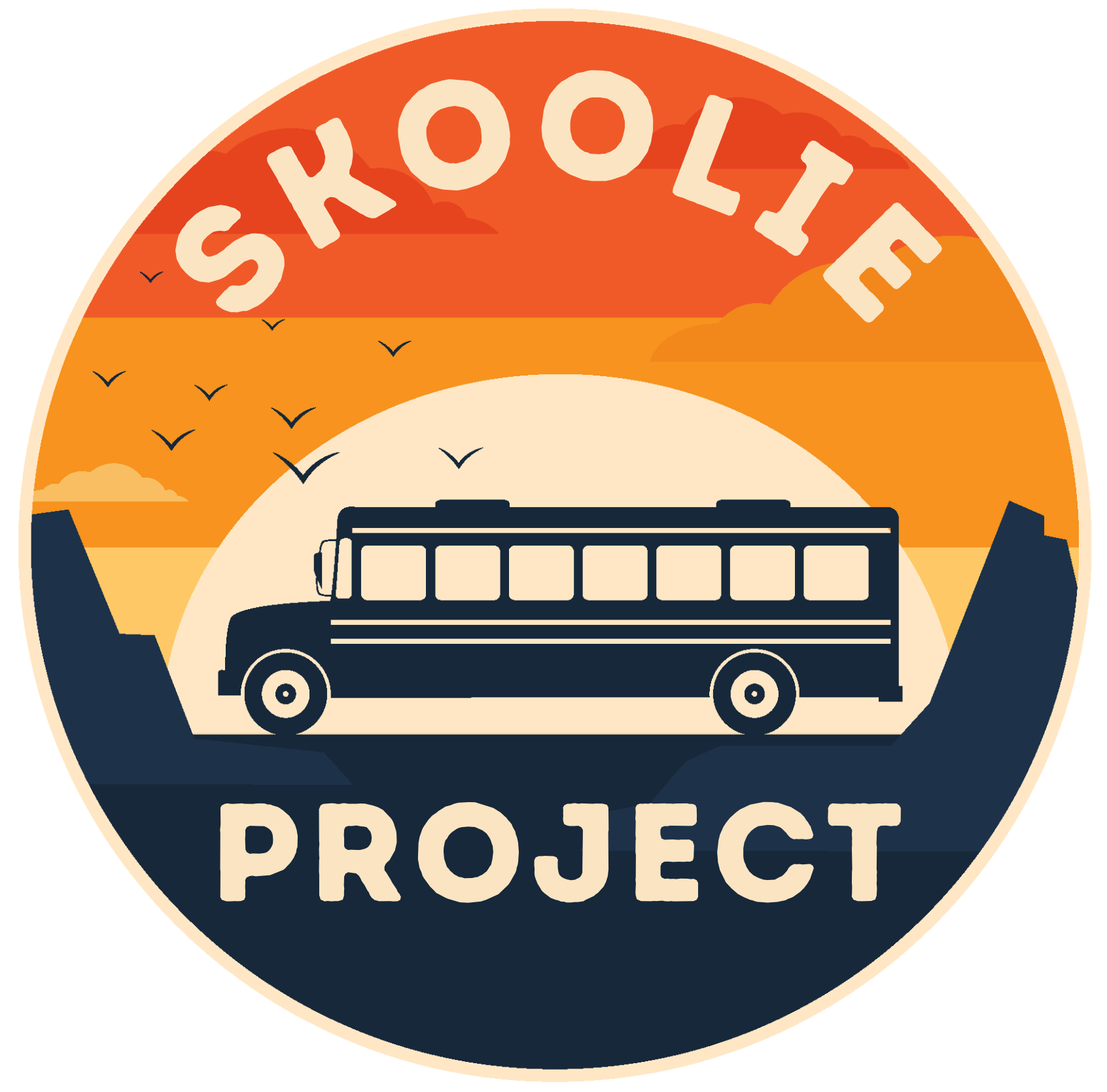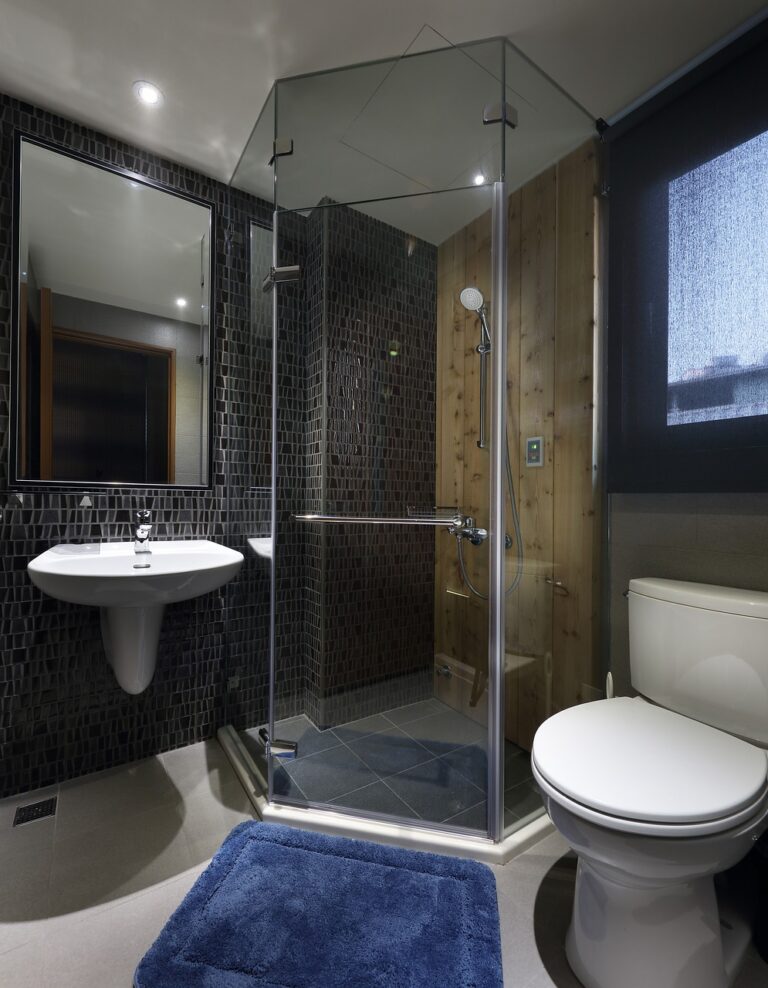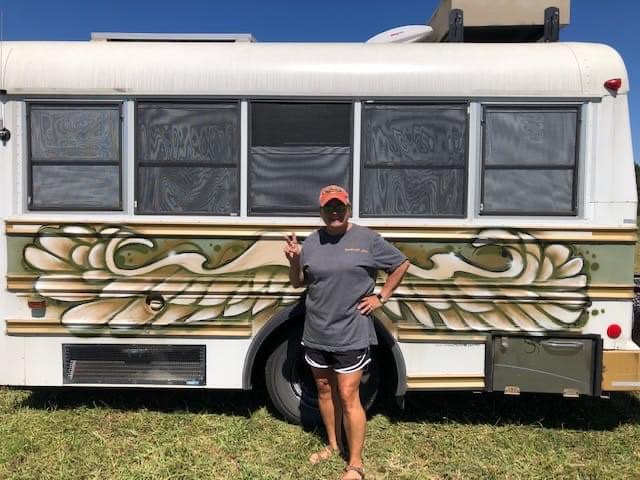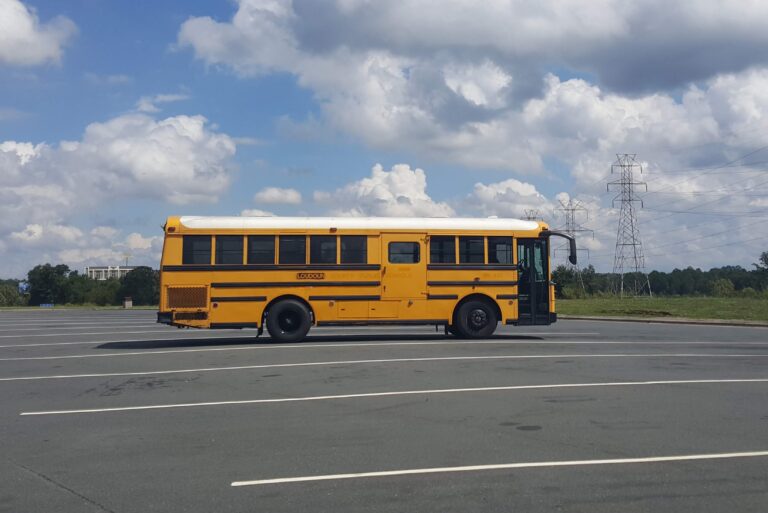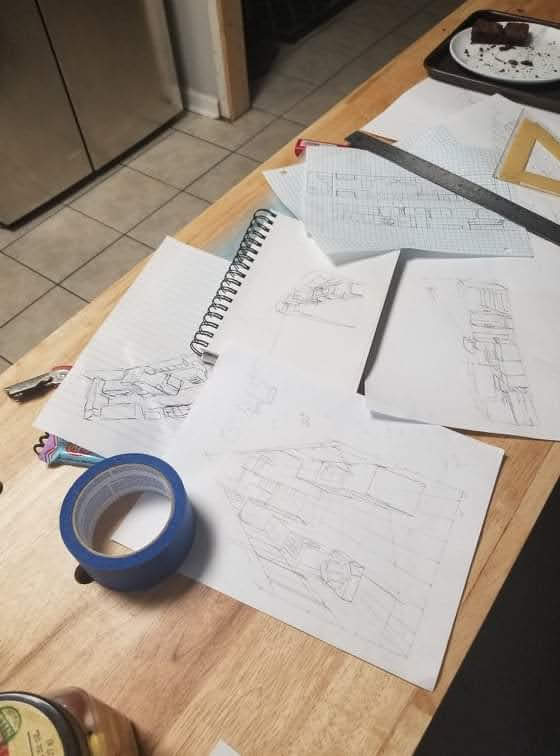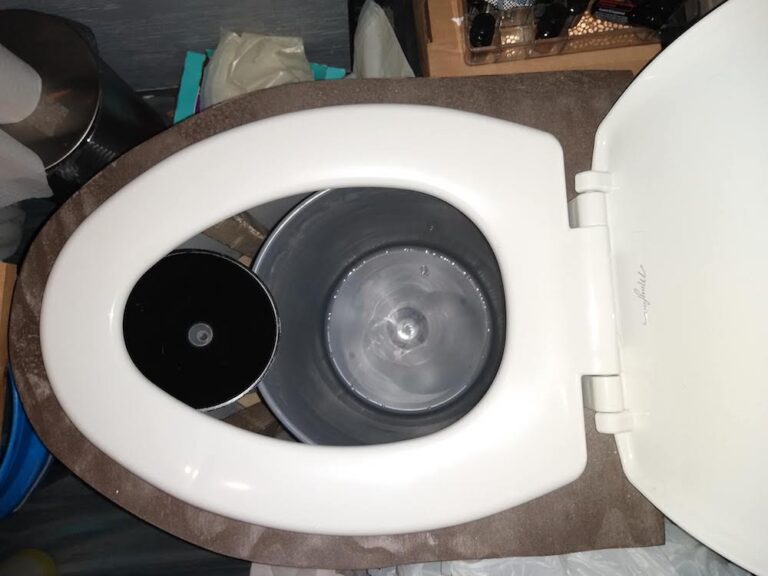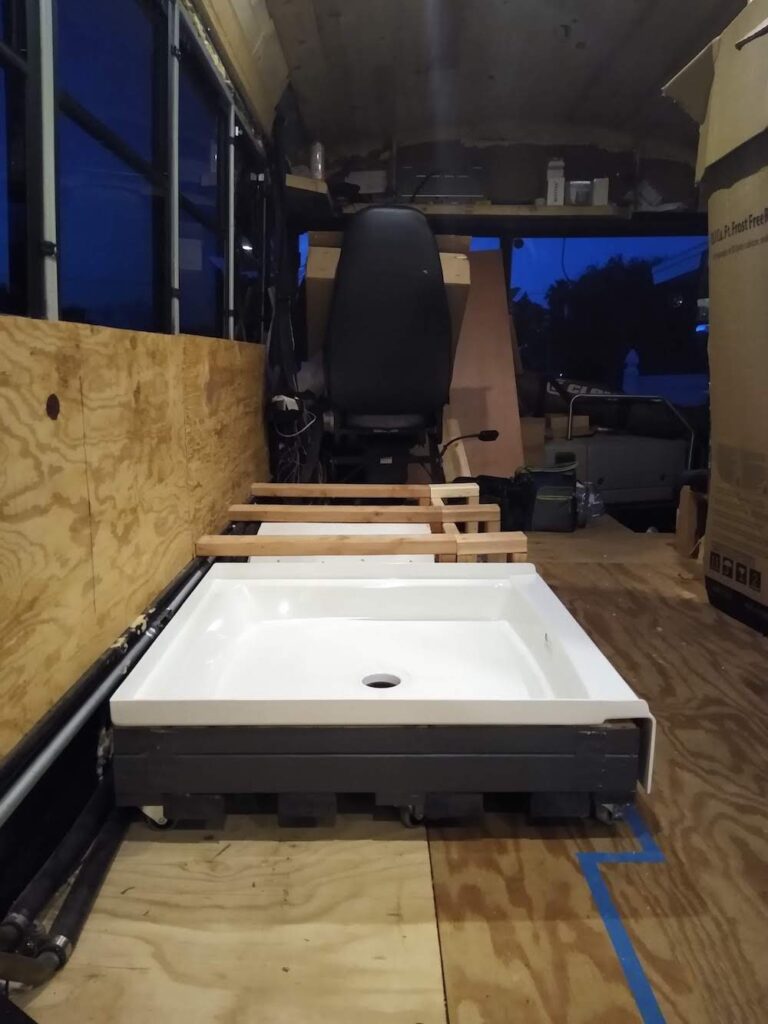2023 Ultimate Guide to School Bus Conversion Costs
When most people think of what all goes into school bus conversion costs, they believe it is a simple and inexpensive venture.
We know that can be true, but there are some school bus conversion costs that many do not even consider until it is looking them right in the budget.
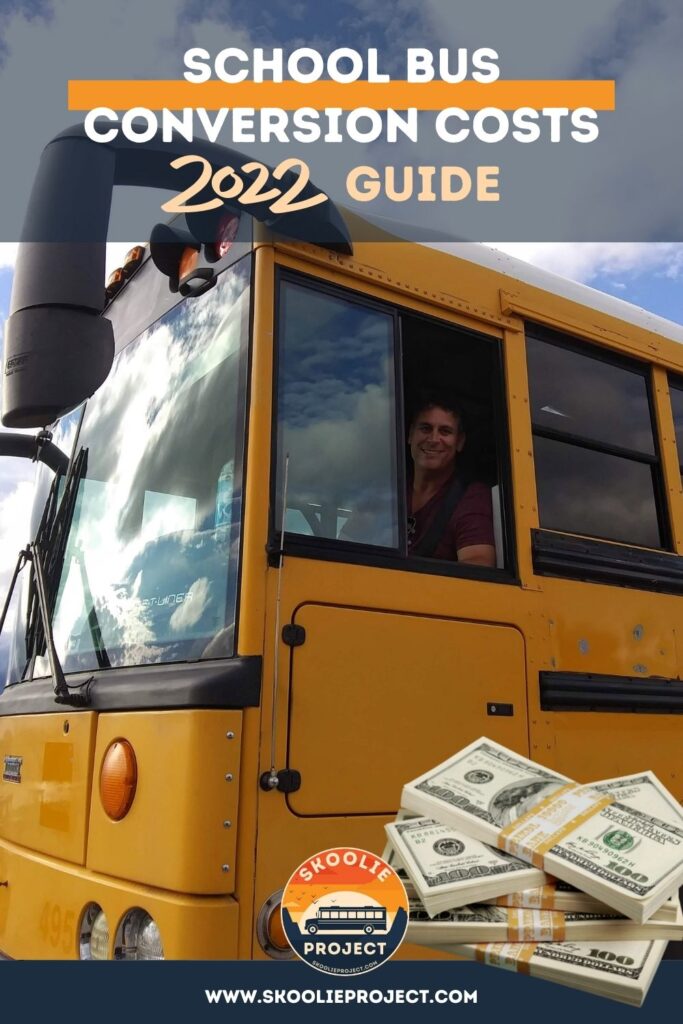
In this blog post, we are going to take a serious look at school bus conversion costs. We can not give you a detailed estimate of a skoolie conversion. We would love to, but builds are such an individualistic and subjective project when it comes to cost.
We will look at the basic costs based on our experiences with our builds.
Is A School Bus Conversion Worth It?
Without a shadow of a doubt, a school bus conversion is worth it! It is worth every penny spent and every drop of sweat exerted.
We are on our third DIY conversion and could not be more excited about the process. We love the process so much, when we are finished with this bus, we are going to DIY build a cabin on some land in Arizona, Maine, or Michigan.
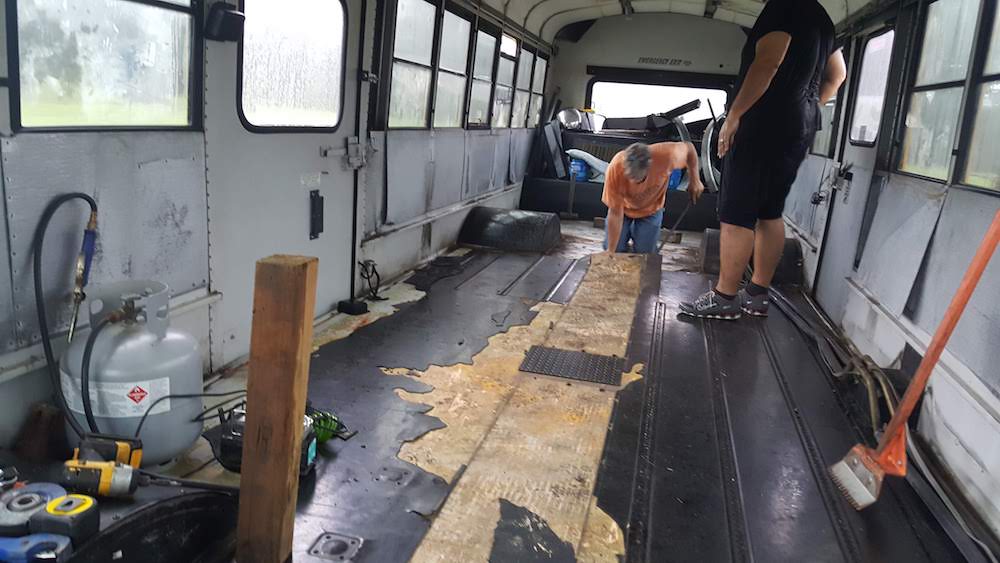
There is something very special that happens when you are converting a school bus into a skoolie or tiny house on wheels.
Not only do you develop skills and knowledge on how to do carpentry, electrical, plumbing, solar, and planning, but you also learn and know exactly how your skoolie was built and how all of the operations work simultaneously together.
Knowing your build intimately is the biggest reason why a school bus conversion is worth it. You also have the confidence and pride of building your own sustainable home that can take you anywhere you want.
Is It Hard To Convert A School Bus?
It is not hard to convert a school bus into a skoolie.
Really!
The hard thing about converting a school bus into a functional tiny house on wheels is getting the gumption to do it in the first place.
Don’t get us wrong now, converting a school bus is a lot of hard work. It takes a lot of time and a lot of resolve and determination.
The nice thing about converting a school bus is that it is your personal project and you can take as much time and be as particular and epic as you want. That is assuming you are not on some kind of time constraint to get it built.
Any type of project or undertaking can be difficult if you do not already possess the proper motivation.
What is your motivation for converting a school bus into a tiny home?
What is your “why”?
Once you know those answers, and decide to begin by purchasing a retired school bus, then and only then you will realize it isn’t so hard to convert a school bus into a tiny home.
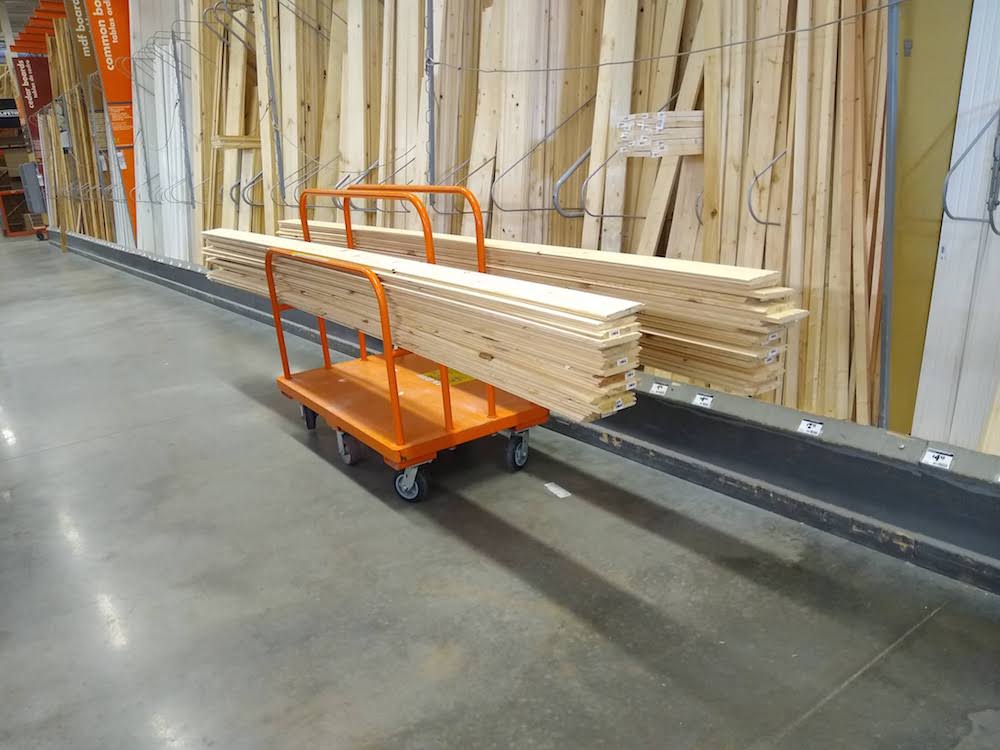
School Bus Maintenance Costs
Let’s jump ahead to post-conversion for a moment. Once you have connected your last piece of plumbing and wired your last electrical component, you may think you are all done.
First of all, we have never met a skoolie that was completely done. It’s like building a house and then thinking you are never going to make any changes, upgrades, or additions to it.
A skoolie is no different. Once you have it where you like it and it is livable and sustainable there are still school bus conversion costs you must face and deal with. The school bus conversion costs continue well after you have moved in and started traveling.
Let’s address a few of the maintenance costs of a school bus conversion.
Oil Changes – School Bus Conversion Costs
Changing your oil on a consistent and regular schedule is a sure way
to increase the life of your engine. The old change your oil every
3,000 miles does not apply with these larger diesel engines.
Regardless if you are running a Mercedes, International DT466,
Cummings or a Caterpillar engine, they all should be serviced and
maintained at least every 5,000 to 7,000 miles or once every six
months.
Expect to spend around $150 – $200 on an oil change when you factor in 3 to 4 gallons of oil and a couple of oil filters. Prices will vary with the oil filters depending on the type of bus engine you are sporting.
Air Filter(s) – School Bus Conversion Costs
When you change the oil for your skoolie, always spend a few extra moments and take a look at the air filter(s). Most diesel engines will have an air filter for the engine and a separate air filter for the passenger compartment.
Both are important to keep clean. Especially your engine air filter. You can identify the engine air filter usually by a large metal cylinder in the engine compartment with straps or buckles.
If you have a dirty air filter, then that means microns of dirt and dust are getting into your engine, and that is going to reduce your engine efficiency, MPG as well as engine life.
Air filters are not cheap for a school bus engine. They are large and they are usually specific to the engine itself.
Be prepared to spend anywhere from $50 to $100 or more just for the air filter alone.
Tires – School Bus Conversion Costs
Skoolie tires are no joke man! They are big and they are expensive.
More appropriately though, they are paramount to the safety of your, your passengers, and your bus.
To prolong and get the most out of your skoolie tires, always check your tire pressures. Keep the recommended PSI in each of your six tires and never drive significant distances underinflated or overinflated.
Be sure to account for outside temperatures as well as altitude adjustments.
Two Types of Skoolie Tires
There are two types of tires you should be purchasing for your bus, drive tires and steer tires.
Steer tires are the two tires in the front of the bus, thus they “steer” the bus. These two tires are the most important tires on your skoolie.
Of course, all six tires are important, but the two steer tires are what are going to keep you the safest.
Steer tires should never have re-tread or “caps” on them. Retread tires are fine for the drive tires if you want to save a little money.
First of all, it is against U.S. DOT regulations, (against the law) to have re-treads on any steer tire. It is just too dangerous.
That being said, plan on spending anywhere from $300 to $500 per tire. The less quality or brand tire you want, the less you will pay.
Going the cheap route is not the recommended route when it comes to your skoolie tires.
Age and Condition Of Your Skoolie Tires
There is one more thing we should remind you when it comes to the maintenance of your bus tires.
The age of the tire matters just as much as the tread. Your tires should be replaced every three to six years depending on the tread and condition.
The sun’s UV rays can wreak havoc on rubber. Your tires are exposed to the sun’s UV rays more than they are not most likely.
It would be a good idea to cover your tires with RV tire covers when you are parked and stationary.
School Bus Conversion Costs & Maintenance Wrap Up
Be prepared to budget around $1000 to $1,500 a year for general maintenance. Depending on how many miles you travel in 12 months, that expense could fluctuate up or down some.
For tires, plan on replacing your tires every 2-4 years, again, depending on how many miles you put on them and how well you maintain your tires.
This is a cost of up to $3,000 or more just for the price of the tires themselves. Factor in another $200 – $300 in labor and disposal costs.
Skoolie Appliances – School Bus Conversion Costs
Having the convenience and comfort of appliances installed into your skoolie project can make life much more comfortable. It will also depend on how much solar you have installed and how many appliances you can run.
If you are planning on being connected to shore power or running a generator all of the time, then you may get away with everything from a microwave oven and an electric griddle to a mini-split air conditioner.
Refrigerator
Having a refrigerator in your school bus conversion is not even an option in our world. Many people get away with it by using a Yeti cooler or something similar. For us, we want the constant reliability of cold beverages, condiments, and dairy products.
Besides, having a small freezer for ice, frozen foods, and ice cream is such a luxury we have done without, but prefer not to.
There are a couple of different directions you can go with refrigerators. We will look at some of the most common options below.
12v Refrigerator
A 12v refrigerator is going to keep your food, beverage, and frozen items every bit as cold as a conventional or 120v refrigerator, but, do it using less electricity.
The main difference between a 12v and a 120v refrigerator is a 12v refrigerator does not draw a lot of amps on startup or when running the compressor.
They are both about as equally efficient and pull about the same amount of amps while running normally.
With a 12v refrigerator, you do not have to worry about electrical loss while your inverter is converting the DC power to AC. Most 12v appliances are built with efficiency in mind more so than standard 120v appliances.
Chest
A chest style 12v refrigerator is nice when you are wanting to conserve space you have little space for a refrigerator. Smaller than the typical “dorm-style” refrigerator, it will fit in a very small space.
A chest-style refrigerator is more efficient as well since the cold air falls to the bottom. When you open a chest-style 12v refrigerator, you are not losing as much cold air as when opening a front or swinging door fridge.
Upright
Using an upright 12v refrigerator gives the user a more traditional look and feel to what they are likely used to living in a house or apartment.
An upright refrigerator will allow you more cubic feet but is also going to cost you 2 to 3 times more than a 12v chest style fridge.
Stove/Oven
Having a stovetop and an oven was a huge luxury for us in our
second conversion. In Caroline, our Thomas HDX skoolie project, we only used a Coleman 2 burner propane camp stove.
We ended up buying a toaster oven for when we were craving baked cookies, pizza or just anything toasted.
For our second DIY conversion, a Sprinter van, we purchased and installed Recpro RV three top burners with full range. It was a little expensive at $599.00, but we knew we wanted a good stove and oven.
We love the versatility of being able to bake anything we want in our oven, but honestly, for what we paid for it, we are not sure we have gotten our money out of it.
School Bus Conversion Costs – Appliances Wrap Up
At the end of the day, appliances alone can cost you $2,000 to $3,000. Depending on the brand, size, and the number of appliances, that number may vary slightly.
Skoolie Electrical – School Bus Conversion Costs
It is possible and we have seen a few skoolies that are off-grid with no electrical components built in at all. It is no different than back-country tent camping, except you would be doing it in a metal tube.
That is not the lifestyle we nor most people prefer when they think of living and traveling in a skoolie.
The school bus conversion costs for electrical is a very finicky animal. There really is no way to estimate the conversion costs of electrical because there is no template or root for what or how much electrical a skoolie needs.
What we do know from multiple DIY conversion experiences is that it can get very expensive.
Right now, copper wire is high due to the demand, lack of supply, and inflation costs of our economy.
Depending on how many 12v outlets, USB, and 120v outlets you plan on installing, we feel it is safe to say a rough estimate for the average skoolie is going to cost somewhere in the neighborhood of $1,000 to $1,500 in electrical supplies. This does not include the cost of tools you will need to install it all.
Check out this helpful post we wrote on electrical.
Skoolie Heating Costs – School Bus Conversion Costs
Some people think if they don’t travel to where it snows in the winter, they do not need heat. If you have spent one night in the South where the temps have dropped to below freezing, you will quickly change your mind about the heat on your skoolie.
There are a few options you can choose from depending on how your solar array is set up or if you want to go with a diesel heater.
Electrical – School Bus Conversion Costs
Electrical heaters are great for heat, but they are very bad for your house batteries. If you have shore power or even run a quiet generator, it may not be a big deal then.
Electric heaters give a fast, dry heat, but the amps used against your batteries do not make them worth it for us.
An electric heater will cost you anywhere between $30 to $150 depending on the size and brand you purchase.
Little Buddy
The Little Buddy propane heaters are efficient and safe. They give off good heat, but it is a humid heat since it is propane. Lots of water vapor is released into the air while you are using propane.
The one-pound propane bottles used to fuel the Little Buddy heater can get rather expensive as well.
Be prepared to spend anywhere from $100 to $200 on a Little Buddy heater depending on the size heater you choose.
On that note, be ready to spend an additional $8.00 to $12.00 on a two-pack of one-pound propane bottles. One bottle on a Little Buddy will last you 3-4 hours.
Diesel Heater
The diesel heater is the premier heating source of choice amongst the skoolie community.
They may seem complicated to install, but really, it’s not as complicated and intimidating as it seems.
The great thing about the diesel heater is that you can feed it directly from your skoolie’s main diesel fuel tank. It uses very little diesel to heat your bus and is fairly quiet.
The diesel heater puts out a very dry heat that will warm you up without the condensation of propane gas.
There are a couple of choices for a diesel heater and we will briefly talk about the two most popular.
Chinese Diesel Heater
The good ol’ inexpensive Chinese Diesel heater. They are easy to find on Amazon and will set you back somewhere in the neighborhood for $150.00.
Buyer beware though, they are notorious for breaking after about six months to a year. At $150 a pop compared to the Webasto diesel heater, it is worth it to some people.
Wabasto Deisel Heater
The Webasto diesel heater is the creme’ de la creme’ of diesel heaters. German engineering has the reputation it does for a good reason.
That reputation and reliability come with a price though. In the neighborhood of $1,500, you can heat your skoolie all night long while using very little diesel fuel tapped right into your skoolie tank.
Skoolie Air Conditioning Costs – School Bus Conversion Costs
Staying cool is one of our main priorities. We don’t mind sweating if the occasion calls for it. When we are trying to sleep or eating dinner watching a movie, we don’t want to feel moist.
So, what are some of the best ways to stay cool while managing your school bus conversion costs?
Other than following 70 degrees all over North America or staying somewhat cool with a couple of MaxxAir fans and open windows.
Mini-Split
The mini-split has become one of if not the most popular school bus conversion cost essentials within the last three to four years. Having a mini-split air conditioner in a skoolie was not that popular until fairly recently.
Installing a mini-split onto a school bus is not what these air conditioners were designed for. Despite that fact, their popularity for a cooling solution in a school bus is gaining ground every year.
Personally, we are not fans of the mini-split due to the fact that they are power hogs as well as they just weren’t meant for the rigors of constant road travel.
A 12,000btu mini-split air conditioner will cost you somewhere in the neighborhood of $1,200 to $1,500 dollars. This price does not include the tools to evacuate the air from the lines and then release the freon.
Otherwise, plan on spending $250 to $300 to have a licensed A/C technician come out to complete that for you.
Window Unit
A window unit is much less expensive than a mini-split, but it uses as much or more power from your house batteries than a mini-split will.
But, if you are planning on relying on shore power or a generator, then this would not be much of an issue for you.
The window unit sticking out of the side of your bus does have somewhat of a, well, “trailer park”, feel to it. It does have that certain Sanford & Son’s style that most skoolie owners want to distance themselves from.
As far as being effective and cooling your skoolie off, we would give it an A+. A decent window unit is going to cost you somewhere in the neighborhood of $150 to $300.
Skoolie Plumbing Costs – School Bus Conversion Costs
School bus conversion costs can sneak up on you when you start to design a complicated plumbing system. Of course, some plumbing fixtures can be much more expensive than others.
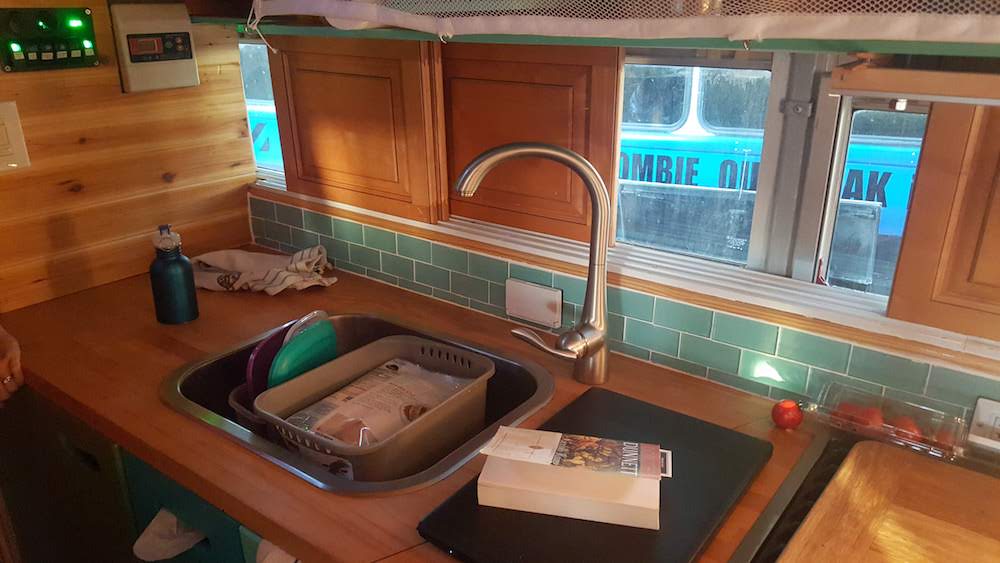
We wrote an informative post on Skoolie Plumbing. Click that link to read more on skoolie plumbing and costs associated with that.
After all the connections have been made for a normal plumbing set up including water tank, grey tank, water pump, sink with fixtures and a shower with fixtures, you can expect to spend around $1,500 t0 $2,000.
Skoolie Build Costs – School Bus Conversion Costs
Finding a bus for sale is not that hard to do these days and the prices, despite the economy are still relatively inexpensive when compared to van and RVs.
Skoolie build costs are what is going to eat up your wallet and shrink your bank account(s).
Whether you plan on a DIY or paying someone else to build it out for you, the school bus conversion costs average somewhere between $20,000 and $30,000 per skoolie.
Of course, depending on your specific conversion, those numbers could be lower or higher.
How Much Does A Skoolie Cost? – School Bus Conversion Costs
Skoolie purchase prices have surprisingly stayed fairly consistent over the last several years. We have noticed school bus proces are slightly higher over the last six to twelve months, but that is primarily due to the current economy.
When we purchased our first bus back in 2018, the asking price was $5,500 and we purchased it for $4,500.
Our current skoolie asking price was $6,500 but, it is a better bus with air ride suspension, no wheel wells, cruise control and in-dash air conditioning.
The asking and selling price on that bus was firm.
You can purchase a skoolie for much less. We are still seeing people purchase an older school bus for less than $3,000.
Just be careful when choosing and paying for a bus. There are many things to look for before handing over the cash. Take a look at this blog on Choosing A Skoolie.
Future Costs – How Much Does It Cost To Live In A Skoolie
The amount it is going to cost you to live in a skoolie depends entirely on how you travel, your entertainment budget, where and how you plan on getting water and propane. Where you decide to park and live while sitting stationary will have the biggest impact on your skoolie living budget.
Other than overnight parking and fuel costs, living in a skoolie is so much less expensive than a traditional dwelling considering utilities and rent or mortgage.
Otherwise, your living costs would be as they would be while living in a sticks and bricks when taking into account food, entertainment, cell phone and internet costs.
We spend about as much as we did when we owned a home, but we are traveling so much more and living a very exciting and adventurous lifestyle.
Which School Bus Is Best For Conversion?
The school bus that is best for conversion is the school bus you decide to purchase! It is such a subjective question.
For us, the Thomas 78” ceiling height bus is the perfect bus for us.
We prefer Thomas buses because they have few to no rivets and are all put together with metal screws instead of the rivits. Therefore, demolition on a Thomas bus is so much easier than a Blue Bird.
The Thomas C2 7 window is great because there is less of a curve in the seiling, so we still have 74” of head space at the windows.
This makes a big difference when installing a shower. No need to create a “sunken” floor to accommodate someone who is 6’0” tall.
Besides the aesthetics or the ceiling height, other factors to consider when purchasing a bus is the engine, transmission and age of the bus.
The newer buses, 2010 and newer, have the electronic, DPF, and DEF emissions systems which can be a real pain in the bottom as well as expensive and finicky to repair.
Wrap Up School Bus Conversion Costs
Your school bus conversions costs are likely to be different than anyone else’s school bus conversion costs. That is because no two skoolies are built the same.
We love how unique and original each build is from another. We have incorporated some features in our DIY conversions that no one else ever has. We love having something original.
When friends and people we do not know see our Tiny Starry Ceiling, they immediately become transfixed. So many people want one in their bus, but when they hear how laborsome it is to install themselves, they quickly change their mind.
Fortunately, you can have it professionally installed. Contact Tiny Starry Ceilings and request a consultation to have a fiber optics TIny Starry Ceiling in your skoolie.
The bottom line is this, it doesn’t matter how much money you spend on your school bus conversion. What matters is that you build your bus to meet your needs and wants while living and traveling in your awesome tiny house one wheels.
We would love to hear about your school bus conversion costs and see what you have done with you build.
Leave us a comment with your special channels or website. We look forward to hearing from you and connecting with you!
